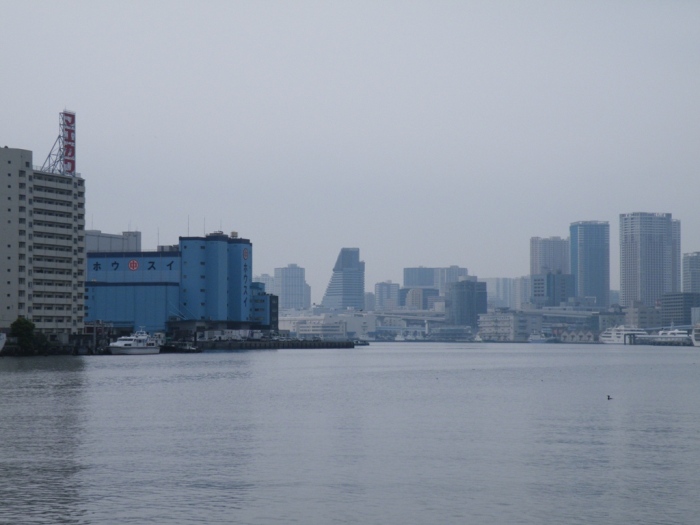
A view of Tokyo from the Fish Market.
April 28, 2008 - Around The World, Day 3 - Tokyo

A view of Tokyo from the Fish Market.
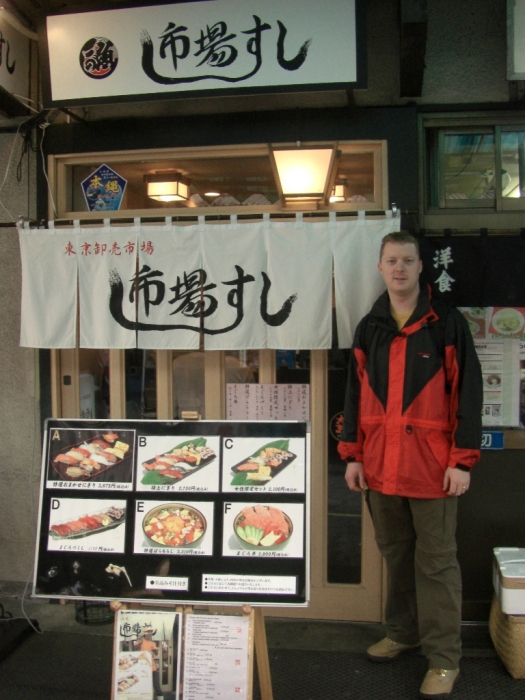
After touring the Fish Market, we built up quite an appetite, so we stop by a sushi place for breakfast.
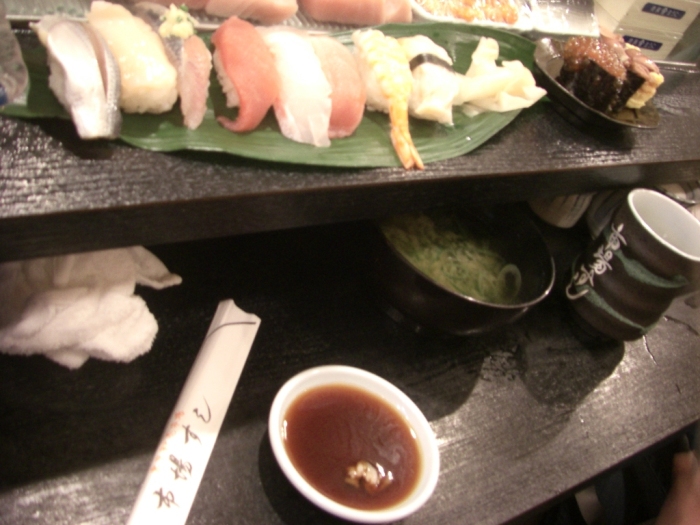
Miscelleous sushi. Most government signs are in English and Japanese, but not restaurants. We can only guess what kinds of fish we're about to eat - and how they're prepared.
The far two things are fish eggs and raw baby squid, which isn't quite as tasty as you'd think.
Oh - and chopsticks only. No silverware, but we sorta expected that.
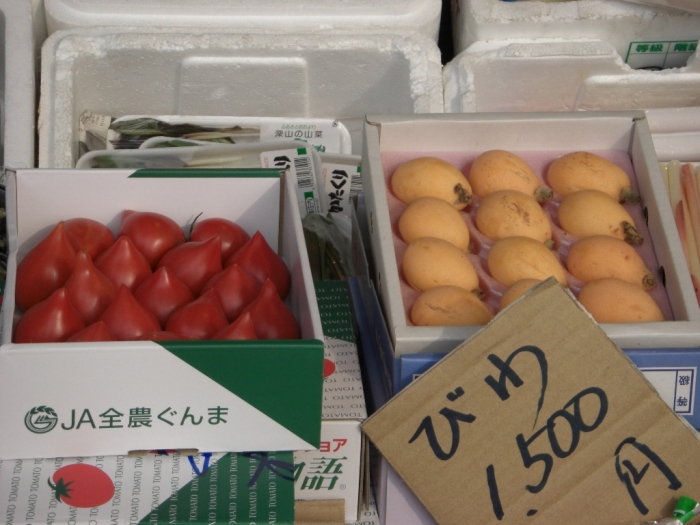
We stop by the non-fish part of the market on the way out.
Do you want tomatoes or Hershey kisses? No need to decide...
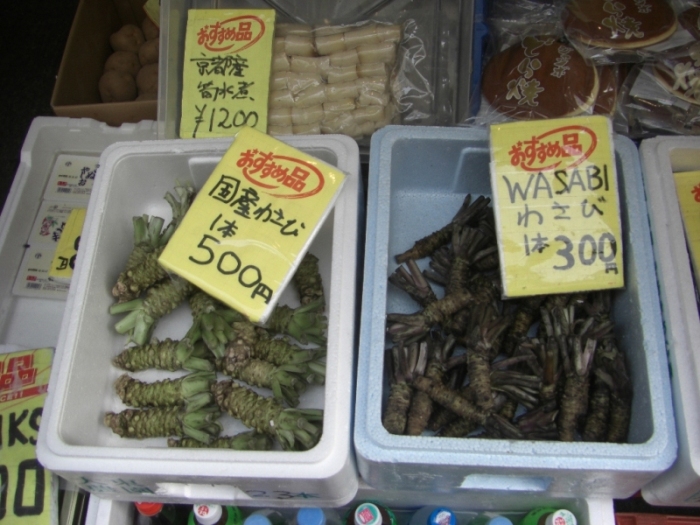
Wasabi roots.
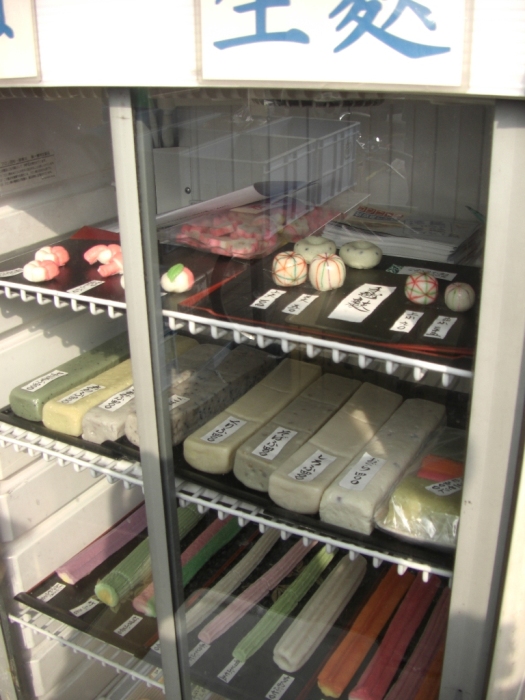
Decorative desserts - or maybe cheeses. Tough to say.
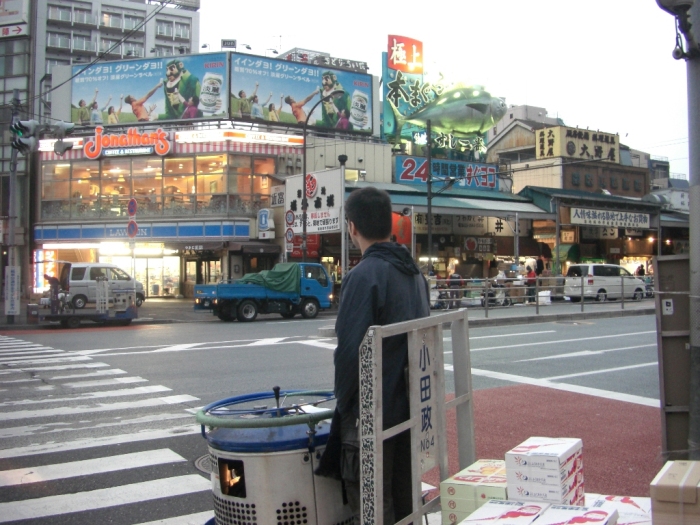
Even blocks from the market, carts of fresh and packaged fish are delivered directly to restaurants.
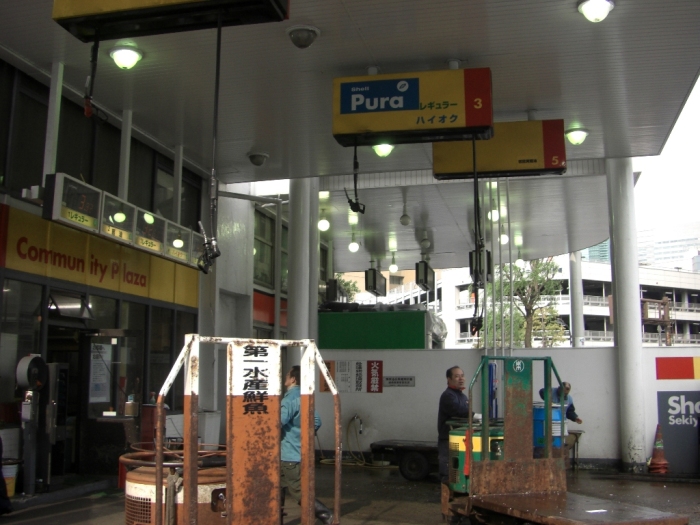
Leaving the Market and heading into town, we see a scary gas station. The nozzles are hanging from the canopy meaning there are gas lines running overhead.
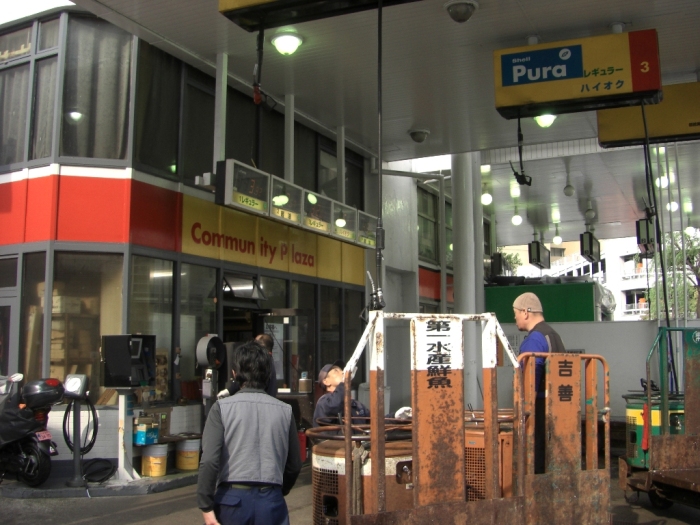
Now also consider that the average Japanese man is... well... not quite as tall as the average American, so this isn't the most user-friendly station format. They have to reach up to grab lines to pull the nozzles down.
I'm guessing it keeps the bad drivers from running into the pumps. (Remember: "no peripheral vision...")
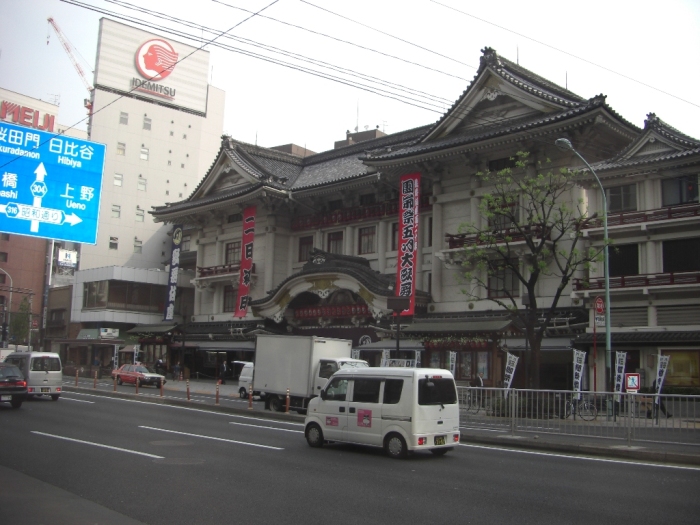
Walking back to the hotel, we pass a Kabuki theater. (It shows a traditional Japanese style plays, with a womanless cast.)
We didn't go to one. The short plays are 4 hours.
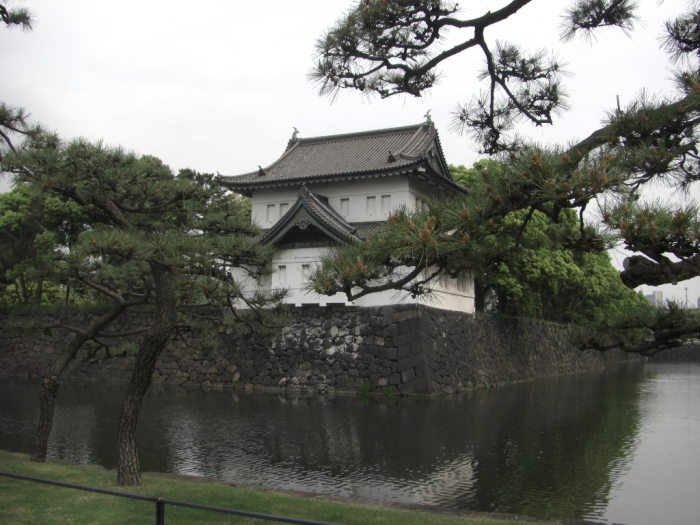
We arrive at the Imperial Palace in Tokyo for the free tour (which must be pre-arranged).
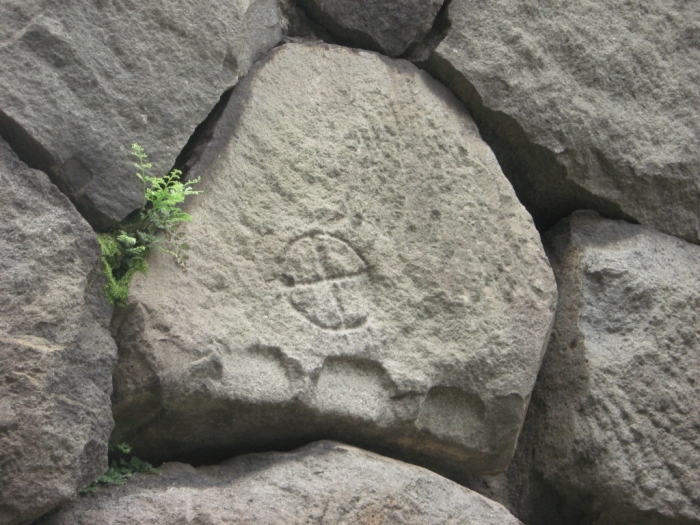
The fuedal lords helped build the Imperial Palace and in turn carved their fuedal symbols in some of the walls. These are hundreds of years old.
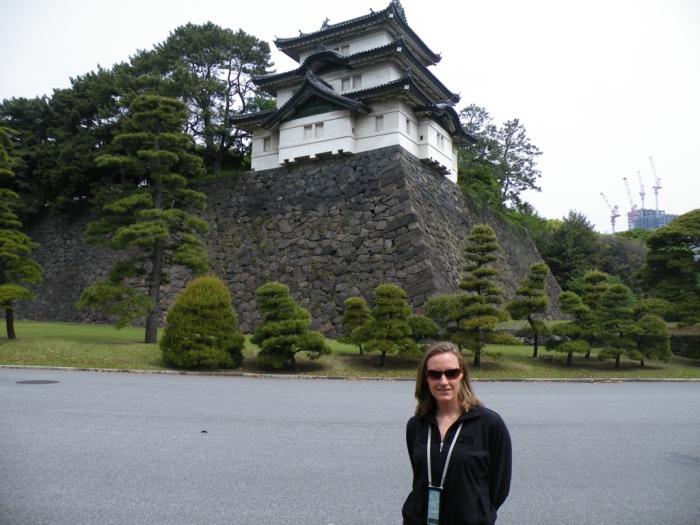
This is the Fujimi Yagura (Mt. Fuji View Keep), which used to have a view of the mountain.
(As the guides don't speak English, Jill is wearing an audio guide and a small earpiece.)
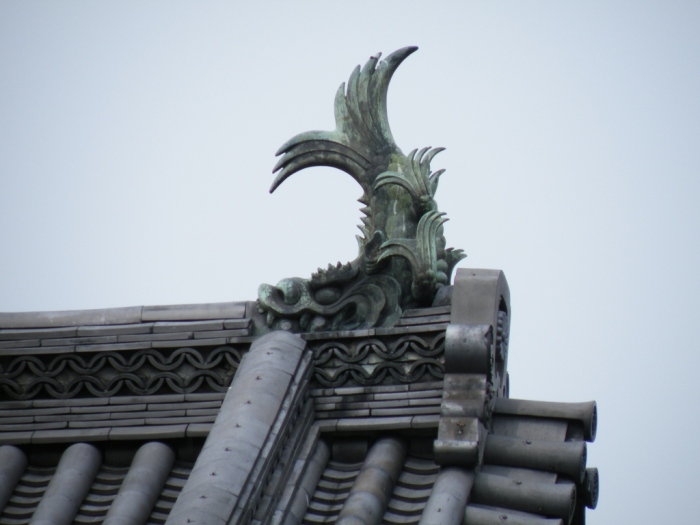
I love the detail in the roofing.
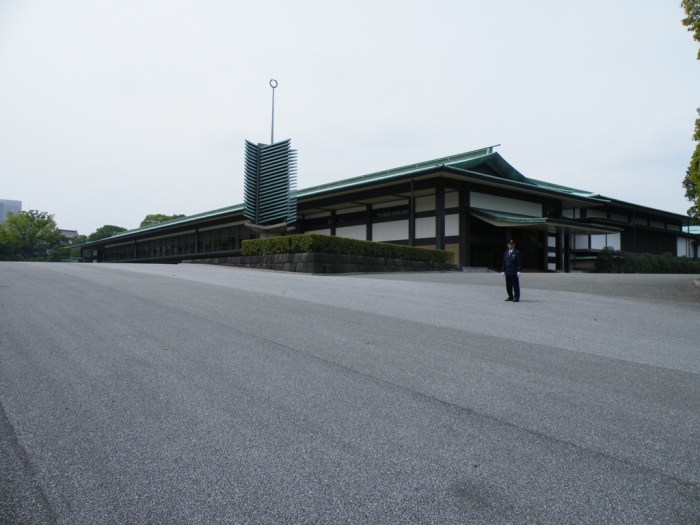
This is the anticlimactic Imperial Palace main building. It was rebuilt a few times, the most recent being in the 60s or so.

Next to the main building are some manicured gardens. These mounds of shrubs are seriously almost 30' tall and 50' around. That fence is 10' tall. How do they cut them?
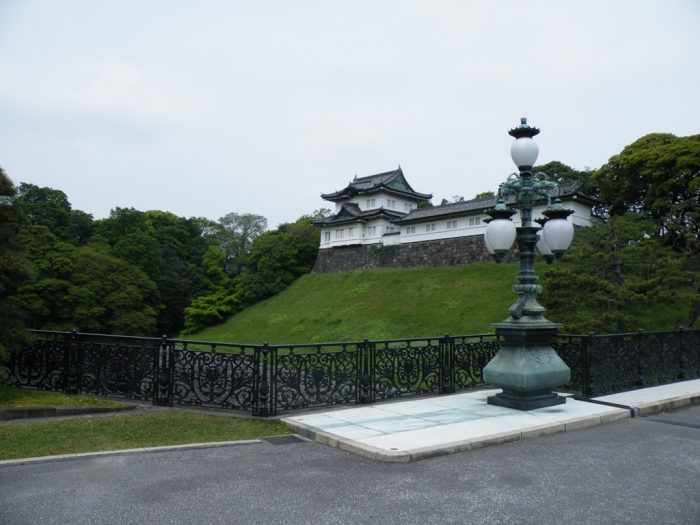
Fushimi Yagura was moved here from Kyoto in the 1600s.
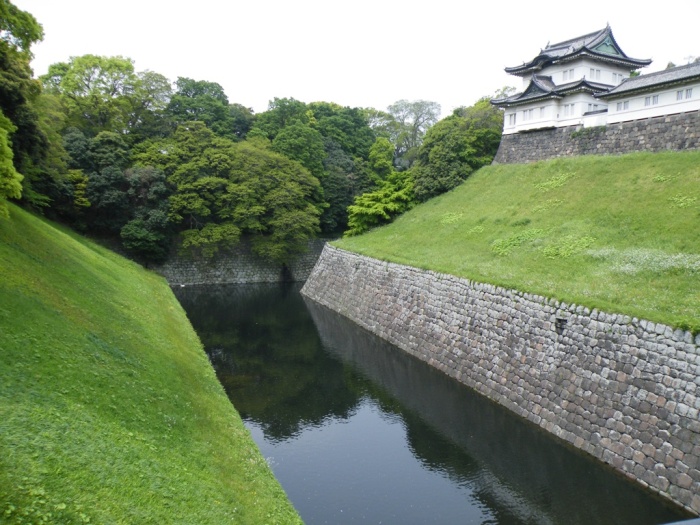

Another scenic keep, from a distance.
(We didn't walk closer to it on the tour.)
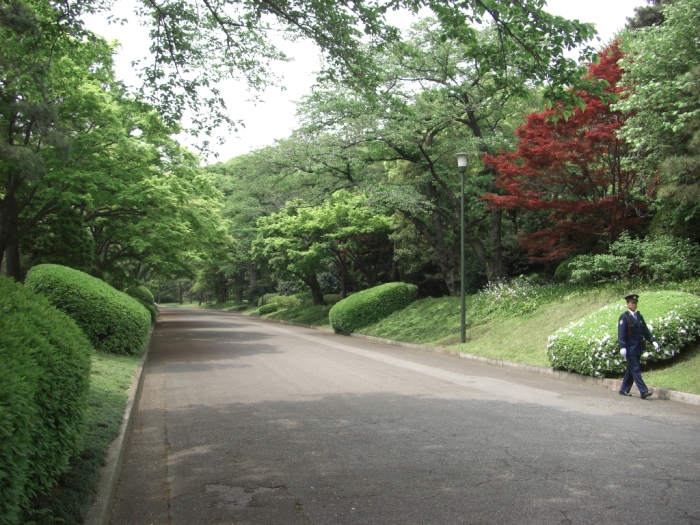
We walk through streets lined with dogwoods [oddly] and the largest Japanese red and green maples we've ever seen.
(I think they just call them 'maples' there...)
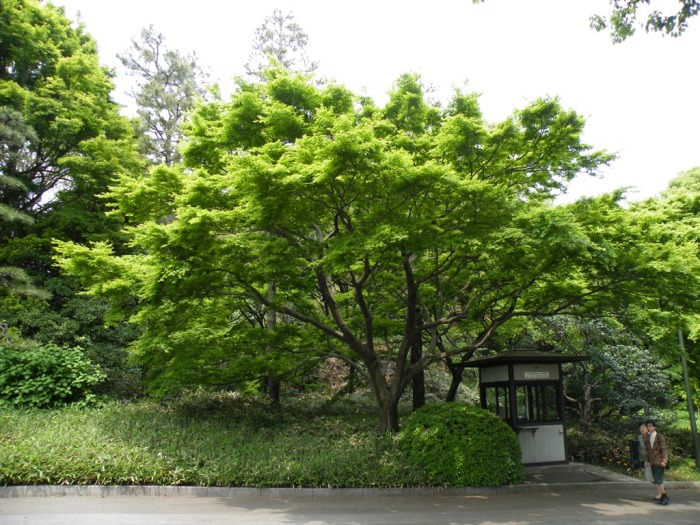
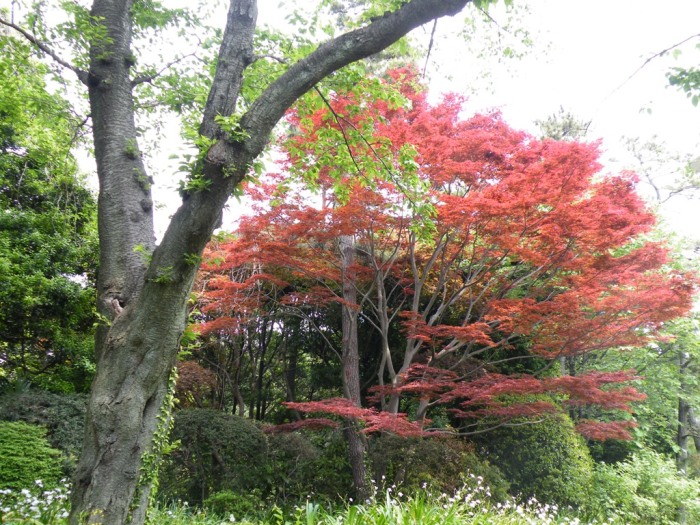
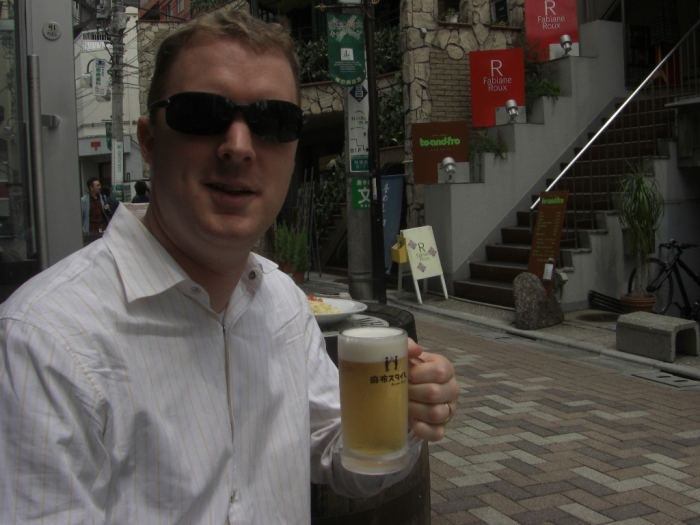
Back to Harajuku for lunch.
Original itinerary:
4/28/2008 - Tokyo